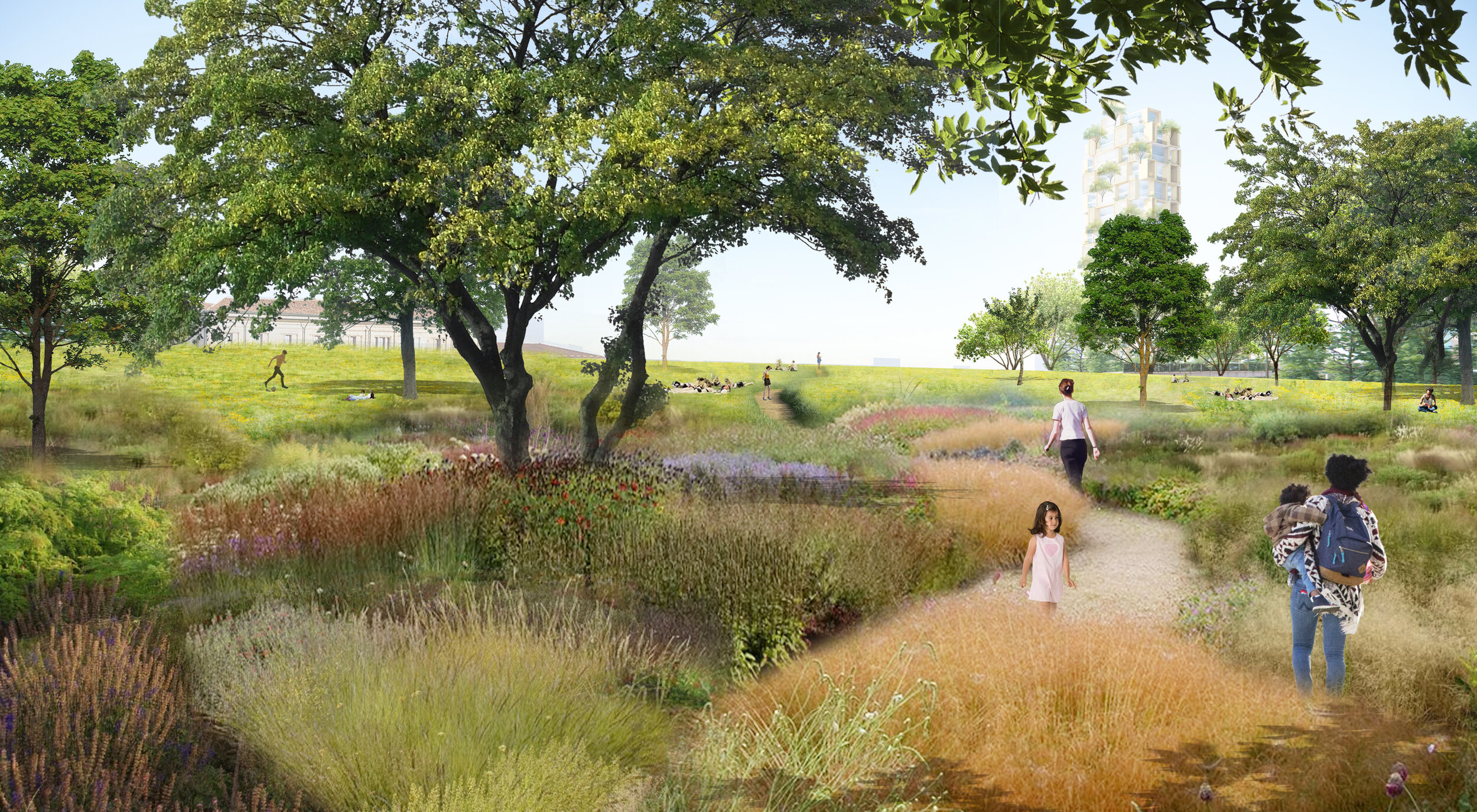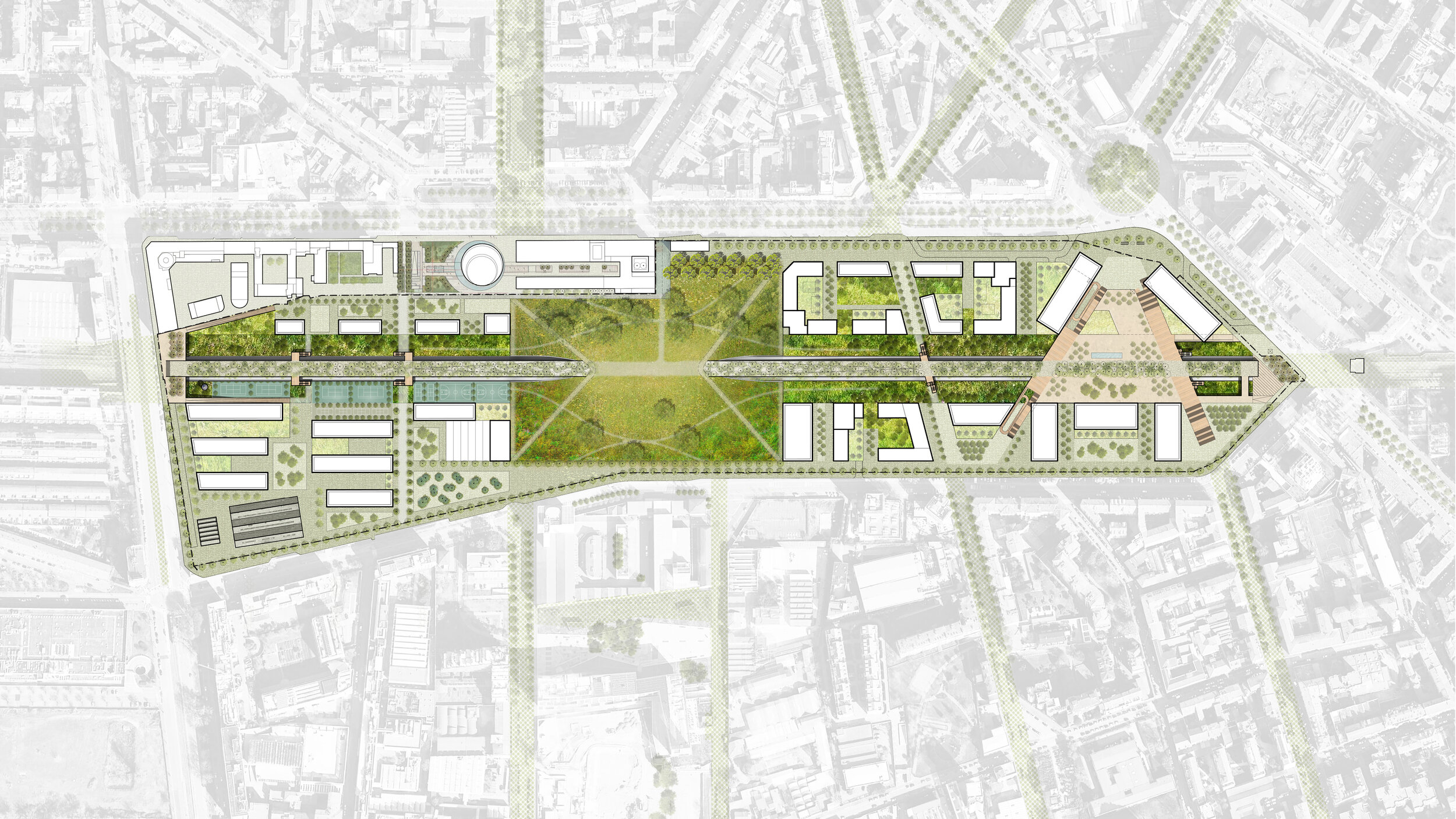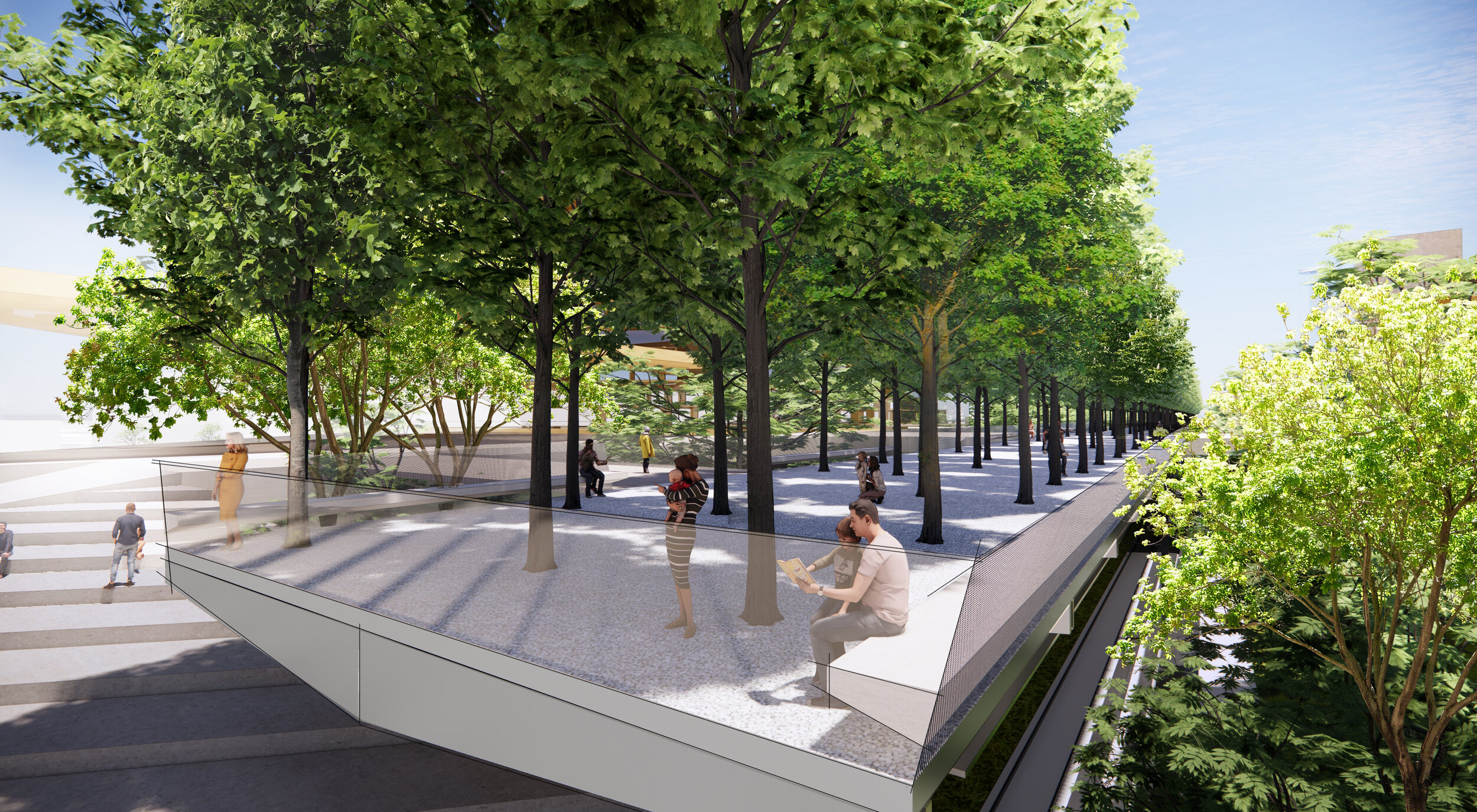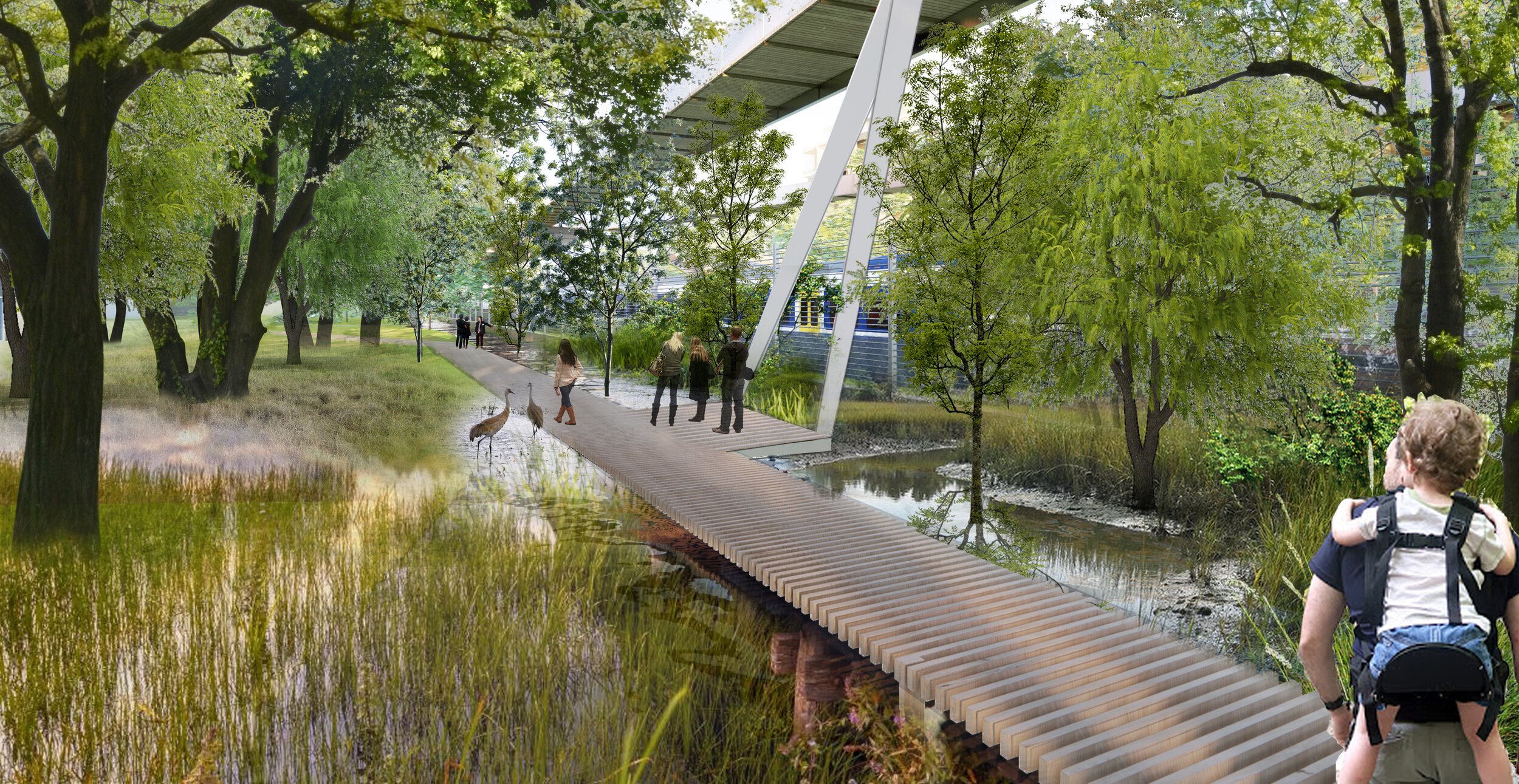From goods yard to athletes' village
Diller Scofidio + Renfro, PLP Architecture and Carlo Ratti Associatti have developed a plan to convert a Milanese goods yard into a park and athletes’ village for the 2026 Winter Olympics.
Milan’s Porta Romana district has been divided by a disused railway yard for over 100 years, but Parco Romana will stitch together, “a fragmented urban realm, reconnecting surrounding neighbourhoods with a vibrant mixed-use district rooted in the principles of inclusivity, biodiversity, resiliency, connectivity and wellbeing.”
The design for Parco Romana aligns with the goals of the Paris Agreement, European Green Deal, and the National Recovery and Resilience Plan defined at the SGD level of the United Nations.
The park extends over an active railway bisecting the site, offering a functional green space for the neighbourhood. The Suspended Forest, a linear elevated greenway containing the existing railway infrastructure, includes hundreds of trees, dedicated walking routes and views of the surrounding area.
Biodiverse woodlands, wetlands, community gardens, courtyards and sports courts will run alongside the tracks, offering communal activities and dovetailing with Milan’s Rotaie Verdi environmental network.
Milan’s Porta Romana district has been divided by a disused railway yard for over 100 years.
The Eastern Gateway district will become a new business core for the city, with well-connected new office and retail buildings facing the Eco-zone and Suspended Forest.
The western edge will initially house athletes for the Milan 2026 Winter Olympics, and after the games will be adapted into an intergenerational residential community. The area includes public piazza that anchor a variety of flexible environments for outdoor exercise, cultural events and co-working, all inside and around renovated historic train repair sheds.
Parco Romana will stitch together, “a fragmented urban realm, reconnecting surrounding neighbourhoods with a vibrant mixed-use district rooted in the principles of inclusivity, biodiversity, resiliency, connectivity and wellbeing.”
A focus on decarbonisation, climate adaption, resilient communities, heath and wellbeing, circular economy and biodiversity, as well as low-carbon construction, and green technologies for renewable energy, clean water and fresh food, “ensure the project becomes a net generator of resources rather than a burden on municipal services.”
The design for Parco Romana aligns with the goals of the Paris Agreement, European Green Deal, and the National Recovery and Resilience Plan defined at the SGD level of the United Nations.
The park extends over an active railway bisecting the site, offering a functional green space for the neighbourhood.
A prioritisation of pedestrians and cycling activates new paths through and to the site, as well as forming corridors integrated with new public plazas that act as gathering spaces at the intersections of main pedestrian routes.
“Built around a new Great Park that serves as the green heart of the development,” say designers Diller Scofidio + Renfro, “Parco Romana celebrates its layered histories while offering shared environments for living and working that unite a diverse community of residents, students, office workers, athletes and visitors.”
The western edge will initially house athletes for the Milan 2026 Winter Olympics, and after the games will be adapted into an intergenerational residential community.




